A numbers-heavy proposition, if I may: across four days, 10 new cars, plus one winner from this feature last year, are considered for Britain’s Best Driver’s Car 2019. Each is awarded a score out of 50 points, evenly split between road and track, independently by seven judges, so the car that finishes nearest to 350 points wins. Yet more numbers will appear in the form of lap times, for reference, and there will be spec sheets, too, but those numbers don’t constitute part of the judging.
And that, for the duration of our annual BBDC tournament, are the only numbers that matter. The numerals of price, power, capacity, consumption, outright speed, g-force and yet more absolutes are all secondary to feel, balance and feedback. And, above all, fun.
Part 1: the contenders | Part 2: the final three | Part 3: the winner
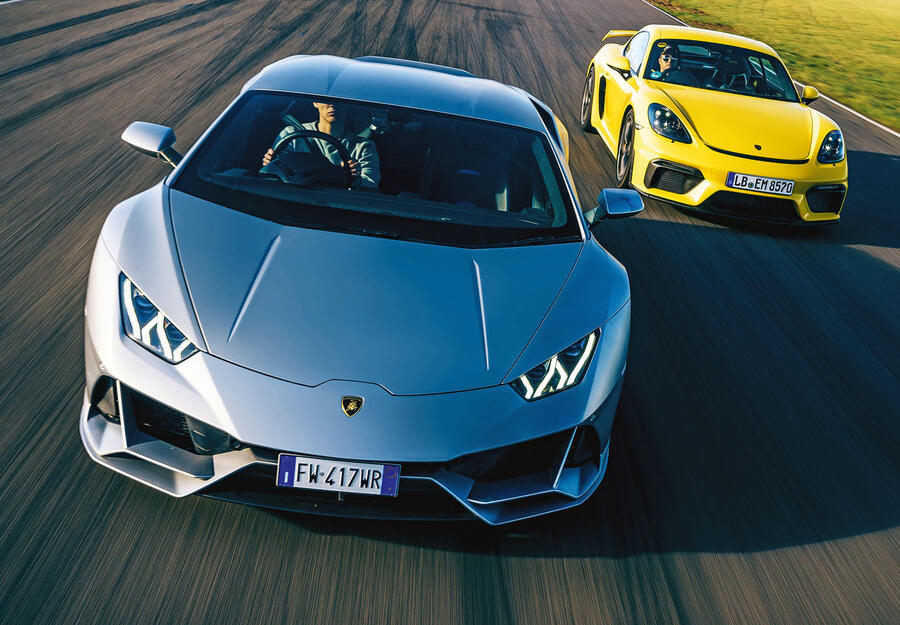
BBDC – Handling Day, informally – has had the same ethos in each of its 30 years. (Later on these pages, we’ll see how some previous winners stand up today.) When modern cars are capable of posting extraordinary acceleration, top speed, grip and lap-time numbers, that ethos is more relevant today than ever. Simply, do they make us smile?
The McLaren 600LT did last year, so it returns to defend its title. This year, it goes up against these: the Ariel Atom 4, Bowler Bulldog, Dallara Stradale, Lamborghini Huracán Evo, Mazda MX-5, Mercedes-AMG GT 63 S, Porsche 911, Porsche Cayman GT4, Renault Mégane RS Trophy-R and Toyota Supra.
It’s worth repeating that these are, already, the best cars of the year: any one of them is terrific company. But even so, there’s got to be a winner. A top – if you’ll excuse a last number – one. MP

The judges
Andrew Frankel - senior contributing writer: Autocar’s Handling Day don is the only bloke who could have written this year’s extra-special anniversary denouement. Always the first one out of the pit lane; didn’t pull a punch in the ensuing debate. An example to all present.
Matt Prior - editor-at-large: Everyone’s favourite tester and columnist deployed his votes with characteristic care, guided the chat and steadied the mood in the pit lane as gently and expertly as ever, and also made a few videos for our YouTube channel that you might like to watch.
Matt Saunders - road test editor: Arrived late, left early, threw his (considerable) weight around and achieved little, as ever – except for setting some benchmark lap times. Still, making an Ariel Atom go faster than a McLaren ‘longtail’ isn’t too bad a result for a not- so-idle Tuesday.
Richard Lane - road tester: Did such a great job with his report from Junior Handling Day that we nominated him to write a big chunk of this test. He was delighted. Also insisted that apples be included among the confectionery in the afternoon snack catering. That’s millennials for you.
Simon Davis - road tester: Like Lane, was judging at an Autocar Handling Day for the first time, and treated the occasion with due seriousness. Looked like he might be enjoying himself at one point when driving something without a roof, but that could have been the light.
James Disdale - road test contributor: Our go-to freelance road tester brought with him plenty of experience of similar giant tests in other car magazines on his Handling Day debut. Duly agreed that BBDC tops them all – not least because we were paying him to.
Mauro Calo - special correspondent: About the closest bloke to Frankel in the “I’ve been to more of these than you’ve eaten KitKats” handicap chase, so we thought it was about time he had a vote. Did so many skids, he actually pulled a muscle.
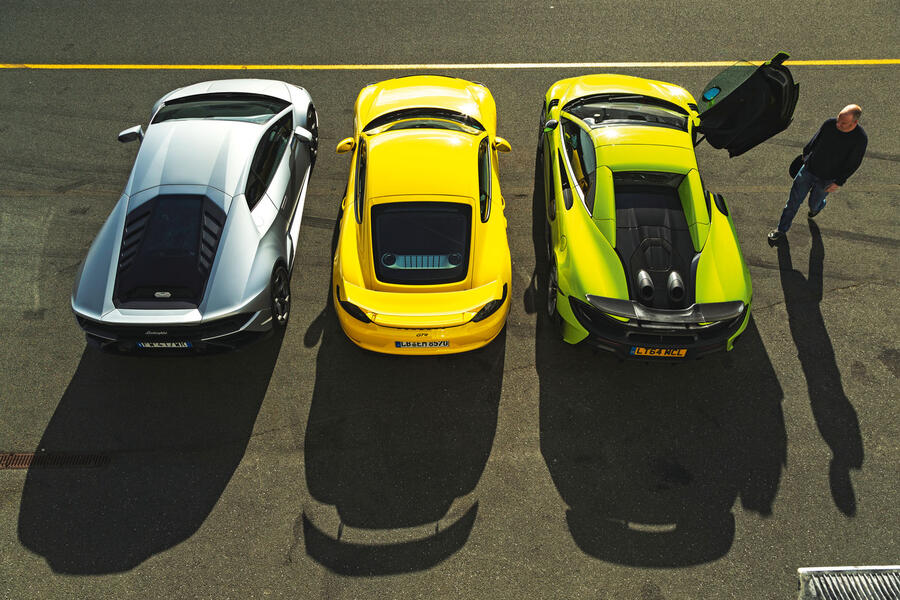
Let battle commence
If you think the glittering world of Formula 1 racing and Autocar’s annual showdown of the finest new driver’s cars have almost nothing in common, you’re right. And yet just like in F1, to stand any chance of winning the mammoth group test informally known as Handling Day, your first order of business is to beat your team-mate. That is, your closest rival in terms of layout, performance and – though it shouldn’t strictly matter – price. Take the McLaren 600LT and the Alpine A110. Last year they competed for victory but only after dispatching the Porsche 911 GT3 RS and BMW M2 Competition respectively. Pairing cars off early in proceedings also helps us judges refine our thinking during the daunting task of ranking so many models on both road and track. Best to break the field down into relatable blocks then cut loose stragglers before the more complicated cross-species battles begin.
Except that, looking down an Anglesey Circuit pit lane at this year’s spectacular batch of machinery, I cannot pick out a single obvious pairing. Two of the cars cost about £70,000 and neither makes any effort to hide its track-day intentions, but the new Porsche 718 Cayman GT4 and Renault Sport Mégane Trophy-R otherwise have about as much in common as a Dobermann and a dachshund. As is tradition, last year’s winner, the phenomenal 600LT, is recalled to defend its crown, and yet it’s hard to imagine a more divergent take on the 592bhp mid-engined supercar than the new four-wheel-drive Lamborghini Huracán Evo. This car has taken Lamborghini to uncharted levels of technological sophistication and seems to prize personality above purity in a way that would have Ron Dennis foaming at the mouth.
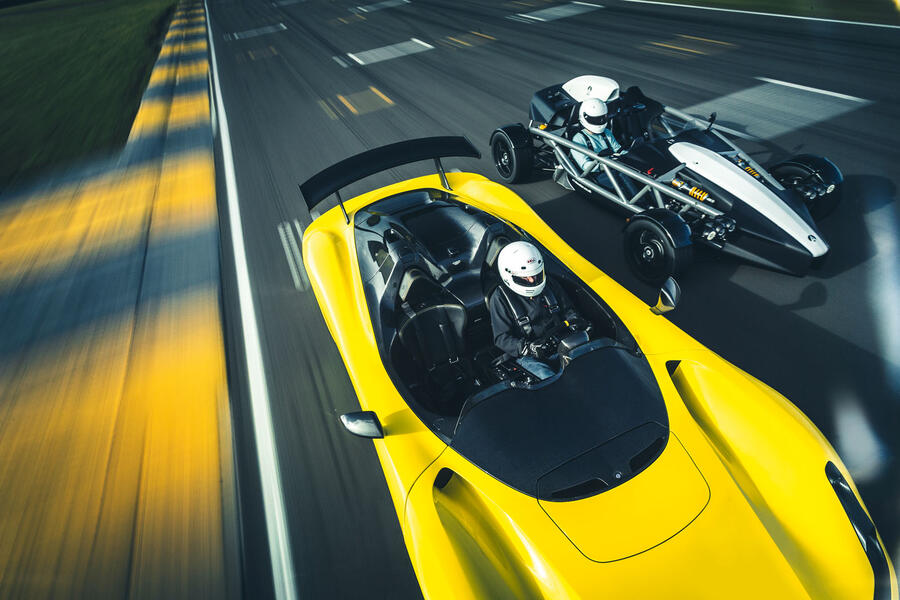
It goes on. There is the Dallara Stradale, another Italian exotic of bottomless pedigree but bereft of any direct rival, though you could just about pit it against the product of an idiosyncratic Somerset firm founded only in 2001. The fourth-generation Ariel Atom is similarly radical in concept to the Dallara and, no, neither car has doors, but culturally these machines are still miles apart. And as crazy as it sounds, the closest genetic relation to the brilliant ‘992’ Porsche 911 Carrera S is Mercedes-AMG’s equally brilliant four-door GT 63 S. Or is it the GR Toyota Supra? Nothing is clear. But being front-engined, rear-driven, balanced and compact on the road, Toyota’s resurrected icon had to be here. Rounding out the field are Mazda’s Mazda MX-5 and Bowler’s unmissable Dakar refugee, more on which in a moment.
The takeaway is this: almost every nook of the modern-day performance spectrum is represented by these 11 cars, and all bets are off. It’s one of the most open-ended contests in the 30-year history of Britain’s Best Driver’s Car, with serious cachet on offer for the eventual winner, but we first need to whittle them down to three for the final shootout. And what better way to get things going than with a car that since its arrival three decades ago has remained faithful to the original’s driver-centric philosophy?
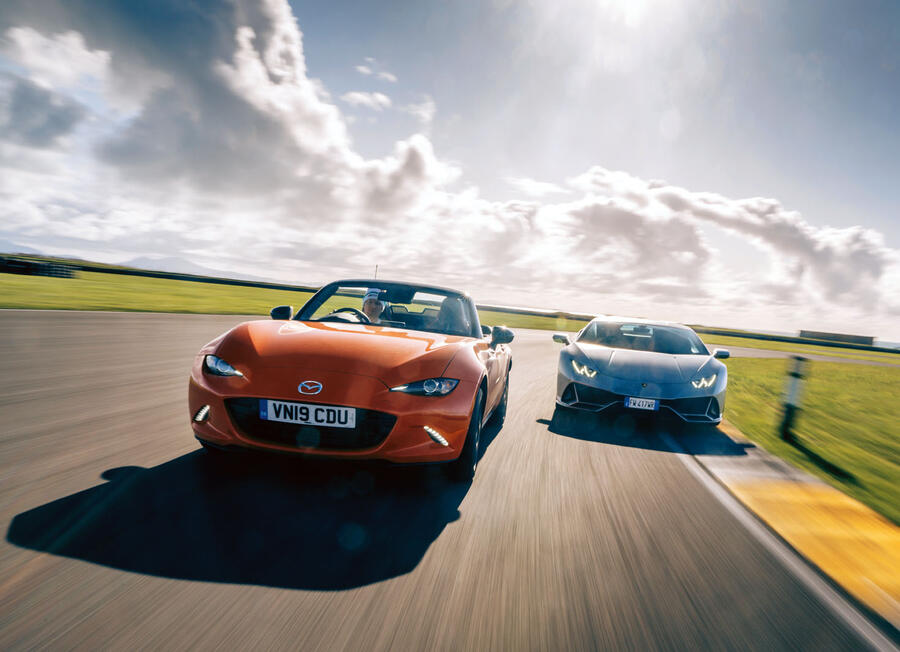
“This is almost everything I want in a driver’s car and in a pint-sized package,” says Andrew Frankel of the MX-5. This example is in blazing-orange 30th Anniversary trim, with marginally stiffer Bilstein suspension than usual, a mechanical limited-slip differential and Mazda’s new naturally aspirated 7500rpm 2.0-litre engine – truly a peach of a motor. At Anglesey, and on the roads of Snowdonia, it’s the car everybody wants a crack in first, quickly showing why it remains a benchmark for accessible handling thrills with little threat of serious spills. The £28k Mazda is also an ideal palate-cleanser before the corrupting influence of big tyres and easy-access torque arrive with price tags to really make one pause for thought.
“Simple still works, doesn’t it?” says Matt Saunders. “Doesn’t matter a jot that it’s got only 181bhp, because the grip level matches it perfectly.” And by ‘perfectly’, he means manageable, keep-you-on-your-toes roll-oversteer and just enough thrust in reserve to sustain generous slides on track. It’s a car that invites you to take aim at the apex of a corner then splice through it at amusing angles, like the sports racing cars at the Goodwood Revival. Some judges find the short chassis a touch nervous at the rear and still too soft on track, but on the road the Mazda is uninhibited fun with neat control weights, good balance and totally transparent cleanser before the corrupting responses. Never before has anything followed up victory at Britain’s Best Affordable Driver’s Car, informally known as Junior Handling Day (28 August), with dominance at Handling Day proper. Genuinely, this could be the year.
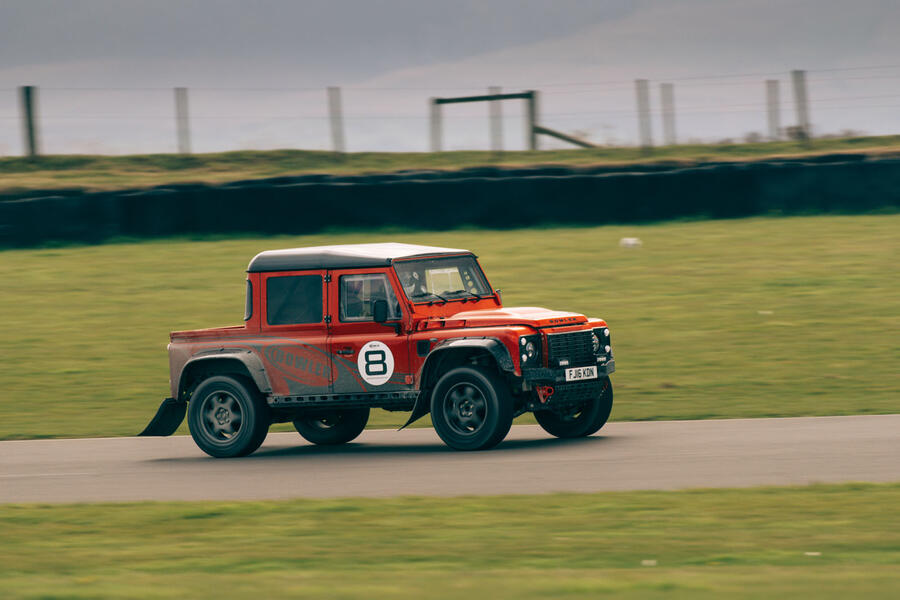
So long as the little roadster isn’t crushed by the most fearsome machine we’ve ever had the pleasure of hosting. The Bulldog looks like a rally-prepped Defender but is actually a bespoke silhouette rally-raid racer with lightweight panels, an exceptionally rigid rolling chassis built in-house in Belper and the 5.0-litre supercharged V8 powertrain from Range Rover’s SVR catalogue. With its side-exit exhaust sprouting mere feet beneath the Perspex driver-side window, it’s also loud enough to drown out the Huracán – itself a feat surely deserving of an award. Nobody believes it will win this contest because its métier is on gravel tracks and sand dunes, but the fact stands: somehow, this 567bhp Defender can handle.
“Can’t help but love the long-travel, any-bump-at-any-speed ride, and how precise and delicate the steering is despite the heavy-duty character,” says Saunders, who, emerging from the Bulldog’s caged and harness-laced innards like a badger from its darkened sett, is so clearly in his element it’s hard not to crack a smile. “No shame that it’s tail-end Charlie here – in its own totally inimitable way, it’s utterly brilliant.” But if progress on the road is unexpectedly precise – and once you’re comfortable with the Marc Márquez lean angles, also amazingly secure – on-track progress is at best unfinessed, not least because the differentials are clearly tuned for muddier environments. And there is, to nobody’s surprise, a fair bit of understeer with which to contend. But as Matt Prior notes, you could miss your turn-in utterly and carry on across the grass at exactly the same speed. The Bulldog will eventually finish 11th, but in the process secure its place in just about everyone’s lottery-win garage.
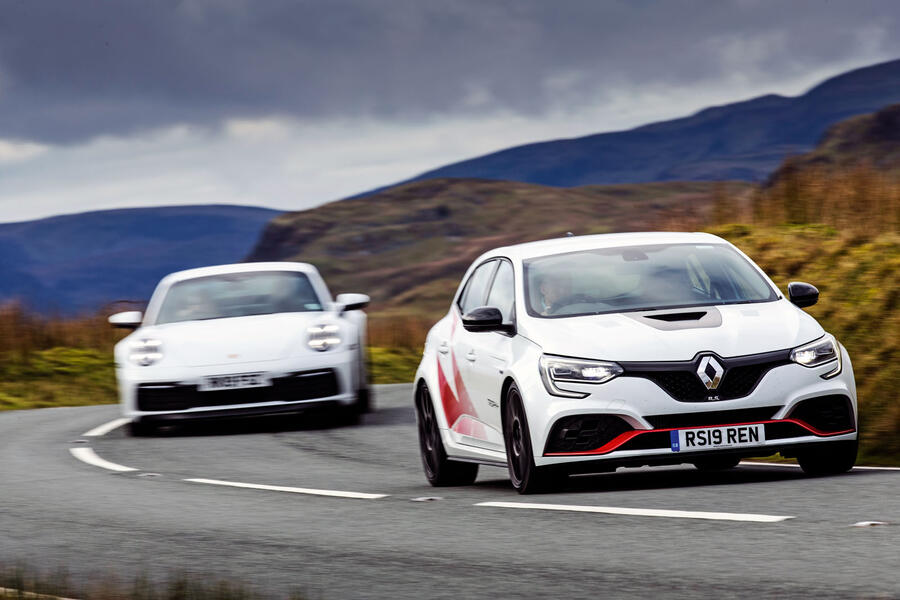
By now, opinions from the seven judges start filtering through from elsewhere. The 911 is demonstrating its hallmark breadth and ability. Words like ‘agile’ and ‘composure’ abound following the road routes, and considering the 992 can come across as feeling heavy and lacking a little in delicacy, just about everyone is taken aback by how adjustable and accurately it handles on track – where, with the shackles removed, it feels decidedly old-school 911. The pillar of the Porsche brand since 1963 has an unmatched record at this event, and predictably the 992 is already at the sharp end of the scorecards. “It’s one car that feels at home everywhere,” says James Disdale.
Except that, if the 911 is to be toppled in 2019, its conqueror could well be one awkwardly close to home. ‘Smash hit’ barely does justice to the original Cayman GT4 of 2015, and this year’s reprise hits the same high notes with its naturally aspirated 4.0-litre engine, manual gearbox and a degree of seriousness exemplified by the clinking of rose joints as the rear axle glides over Catseyes. And boy, is it good on these Snowdonia roads. For a mid-engined lightweight of usefully modest footprint, the new GT4 delivers jaw-dropping stability then overlays it with detailed steering of delirious accuracy and at times extraordinary delicacy.
“So involving,” says Frankel. “I love the gearshifts, the steering linearity – its gearing, and the size and feel of the wheel, all of which is indicative of this car being designed by people who really get it.” Simon Davis echoes the sentiment, and talks of a supremely coherent package, even if the pedal positions are not quite as perfectly placed as they are in the Mazda. For me, it’s the ever-present sensation that the GT4 is perfectly distributing its mass between the balls of its feet, which in this case are the contact patches of four sensibly sized Michelin Pilot Sport Cup 2 tyres.
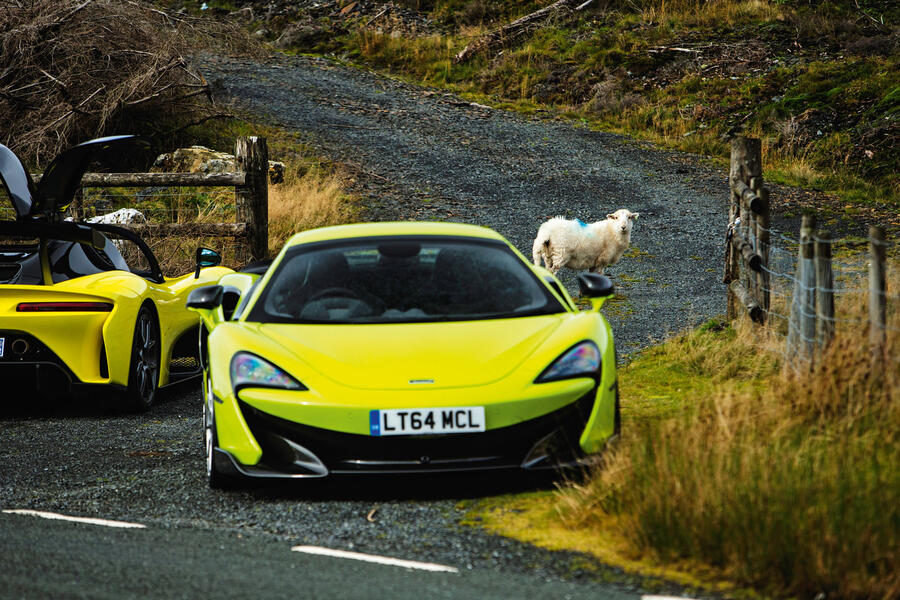
With the possible exception of the McLaren 600LT Spider – a sublimely communicative supercar that, only one year on from overall victory, really ought to make the final trio – the junior Porsche is the finest road car here. Which is why it seems all the more surprising that it will go no further. To a man, we all expected the Cayman to raise its game higher still on track, but it doesn’t. Lap times aren’t so important at Handling Day but it says something that the twin-turbocharged but heavier and more conservatively tyred Carrera S pips its sibling against the stopwatch. What it says is that the GT4 doesn’t develop enough front-axle grip during turn-in and mid-corner to fully exploit its layout. One has to wonder whether this new engine, which is effective but lacking in torque and often bland on the ears, also holds it back in subjective terms. And though Porsche regards cog two as a go-to driving gear, most of us find the ratios too widely spaced. In the end, it’s out. Talk about an upset.
The wild Mégane Trophy-R finds a similar fate. Several judges recognise shades of the sometimes electrifying but too often flawed and unpredictable BMW M4 GTS in the carbonfibre-wheeled Renault. And in fairness, what it does well, it does like few others can. It has composite body panels and so little weight to tug it off your chosen line that every inertia-free direction change is nothing short of breathtaking. I’d go as far as to say that, point to point along these Welsh roads, there’s little to touch it here, so long as you can assert your will on the chassis – though this is more easily said than done. The front axle is particularly vulnerable to deflection and the suspension indecently stiff at times, and yet on track it lacks the balletic poise of its forebears. Misconceived? Just a bit.
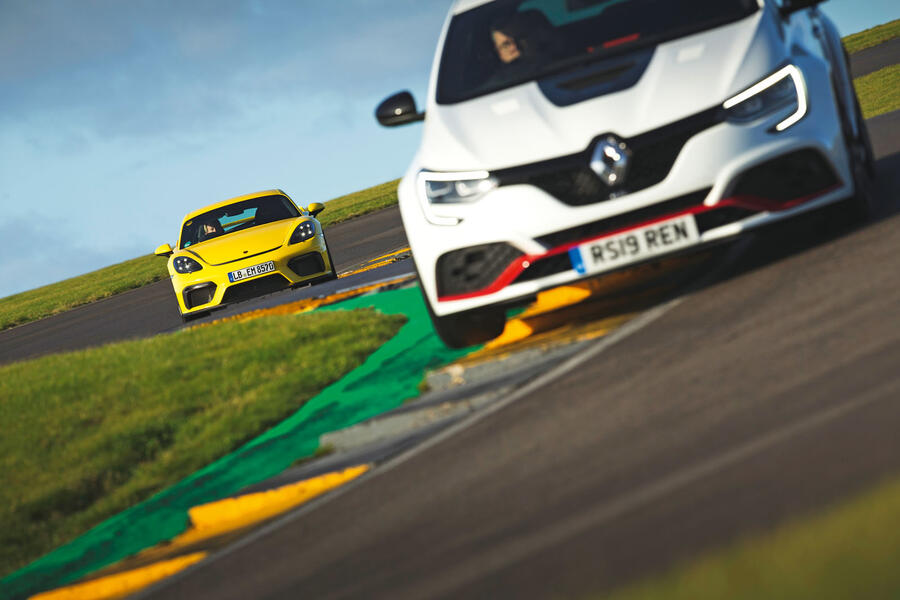
“I want it to feel more like an old RS hot hatch on track and less like a lap-record car,” says Saunders, who speaks for everyone when he adds that the off-the-shelf 1.8-litre turbo and manual gearbox don’t justify the exorbitant price, either. In the end, not even a rear diffuser that looks as though it was ripped from a Lamborghini concept car can save the likeably hardcore but strangely unfulfilling Trophy-R from its eighth-place exit.
And so to the Huracán Evo, a fighter jet on wheels whose demonic V10 almost fires it back onto the finish straight before the aural onslaught delivered at the far side of the circuit has even washed over the pit complex. What a character, but modern Lamborghini represents something of a conundrum for the car enthusiast and it’s a conundrum encapsulated by the Evo.
The 5.2-litre naturally aspirated engine and dual-clutch gearbox are a match made in heaven, no question. In fact, this powertrain is by far the best we have here, and arguably the best on sale. However, while four-wheel steering and torque vectoring have given the revised Huracán the sort of agility even the Gallardo could only dream of, unlike in the Carrera S these technologies muddy the waters of communication between chassis and driver. Moreover, at what are admittedly stratospheric limits, the chassis still wants to understeer. And worse still, there’s very little the driver can do about it other than back off and let some neutrality waft back in. Overly firm ride aside, the Lamborghini can come across as a fabulous road car, but on track it is further stymied by over-servoed brakes, nervous steering and the least transparent, malleable chassis here – all of which could be remedied, one feels, without incurring major R&D expense, because the consensus is that the underlying hardware is extremely capable. As it is, Disdale reads my mind when he wonders how a manufacturer that gave us the Lamborghini Performante could suddenly take such a backwards step. Were it not for the more forgiveable flaws of the Bowler, the Lamborghini would have finished stone-cold last.
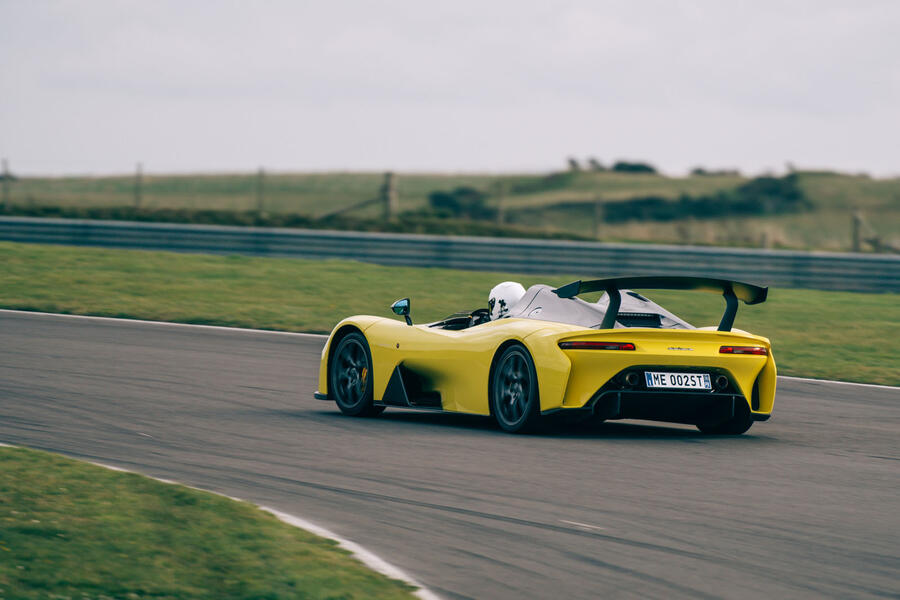
Conversely, it’s difficult to imagine a manufacturer taking a more decisive step forwards than delivering its first road car in almost half a century of existence. The Dallara Stradale is a carbonfibre-monocoque, carbonfibre-body, double-wishbone track-day titan built in the mould of an old prototype racer, only bleeding edge in its execution. It is deeply uncompromising and fiendishly expensive but, for a very small community, its emergence will be a very big deal.
And, as Frankel observes, it will do things on track the others simply cannot, summoning unshakeable composure through fast corners like Church thanks to the exquisitely accurate, feelsome steering and palpable aerodynamic downforce. Nevertheless, talk of an overall win is short-lived. On the road, it fails to get under the skin of most judges, the brakes again feeling over-servoed and the robotised manual gearbox stilting progress.
“Very special on track when it’s really working,” says Saunders. “It becomes drivable and balanced, and tactile and forgiving and so quick, which it isn’t on the road.” Were this contest based solely on track, the Dallara would earn a guaranteed podium. As it is, it finishes sixth, leaving its mark by way of easily the quickest lap time and a driving experience few will ever forget.
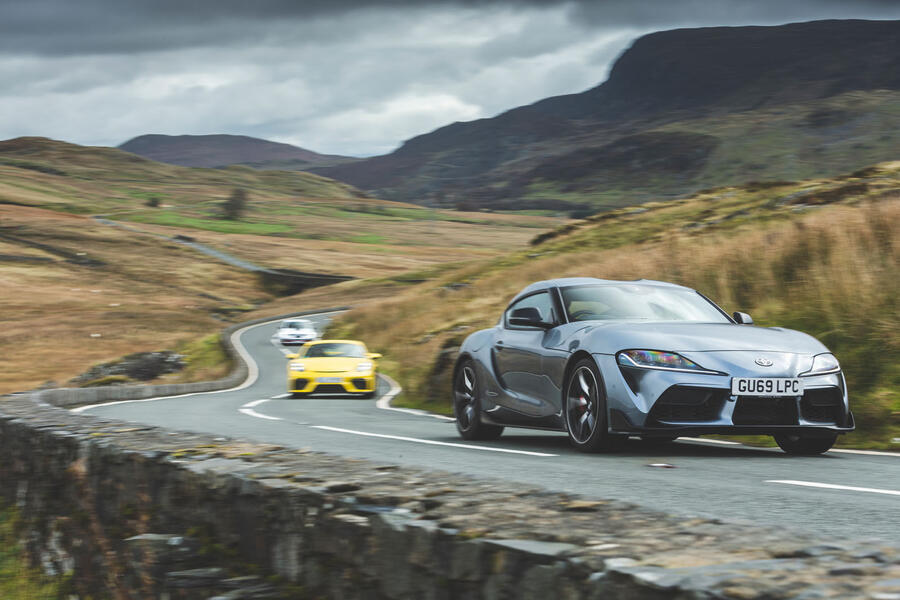
Meanwhile, both the Supra and the AMG love to go sideways and as everyday options one could do a hell of a lot worse and not much better in their respective classes. The GT 63 S is particularly impressive – nothing short of an exhibition in calibrating chassis electronics to shrink an enormous car, and with barely a hint of artifice. Its rasping 4.0-litre twin-turbo V8 is also an endless source of amusement and is paired with nigh-on flawless suspension rates for road use. But although it’s a fine representative from the world of bigboned family muscle cars, for obvious reasons this 2045kg AMG is also out-boxed on days like today. And though the Toyota demonstrates fantastic beyond-the-limit balance and a likeably robust powertrain, the experience is undermined by the total dearth of steering feel and lethargic direction changes. Both cars are very good, but only something exceptional will get you into the top three.
With both the Cayman GT4 and the affordable, addictively fun MX-5 – without doubt our moral victor – just falling short, that’s a clique consisting of the 911 Carrera S, the 600LT and… the Atom. I know: so far we’ve said almost nothing of the fourth-generation Atom. Let me assure you, that’s about to change.
READ MORE
Britain's Best Driver's Car 2018: and the winner is...
Britain's best affordable driver's car 2019 - part one
Britain's best affordable driver's car 2019 - part two


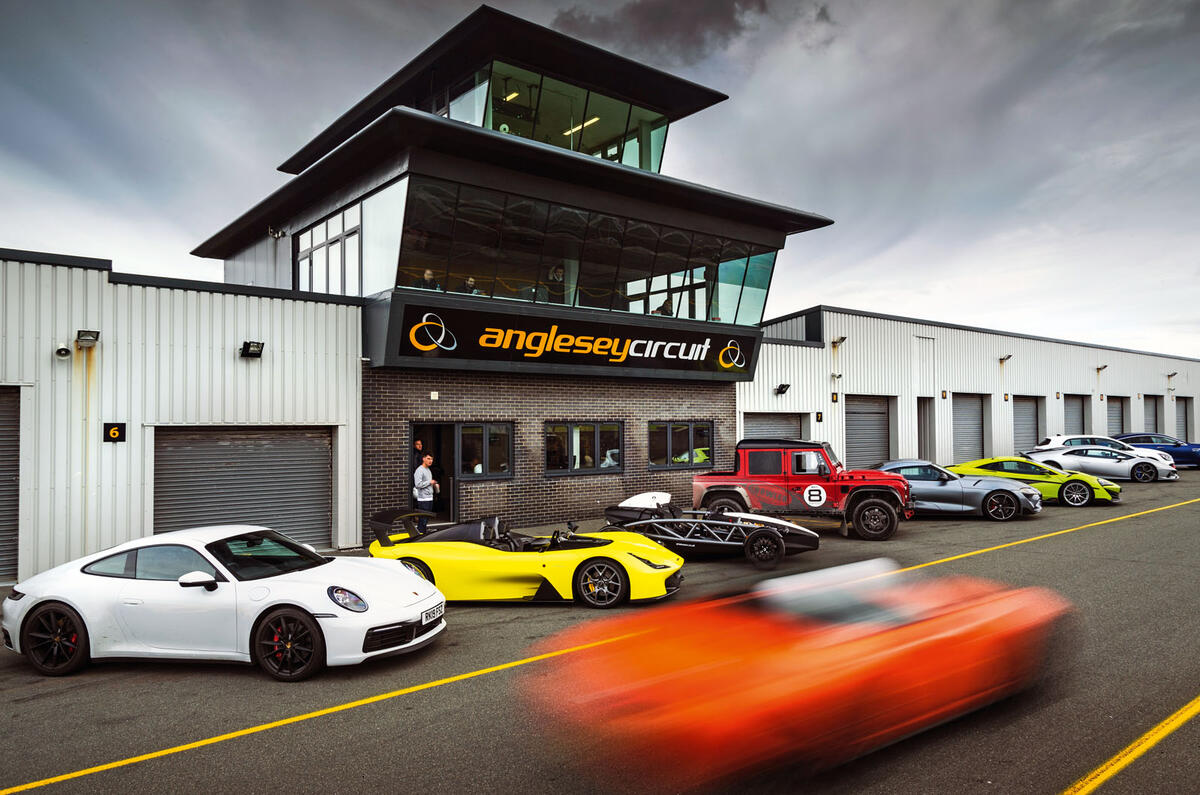
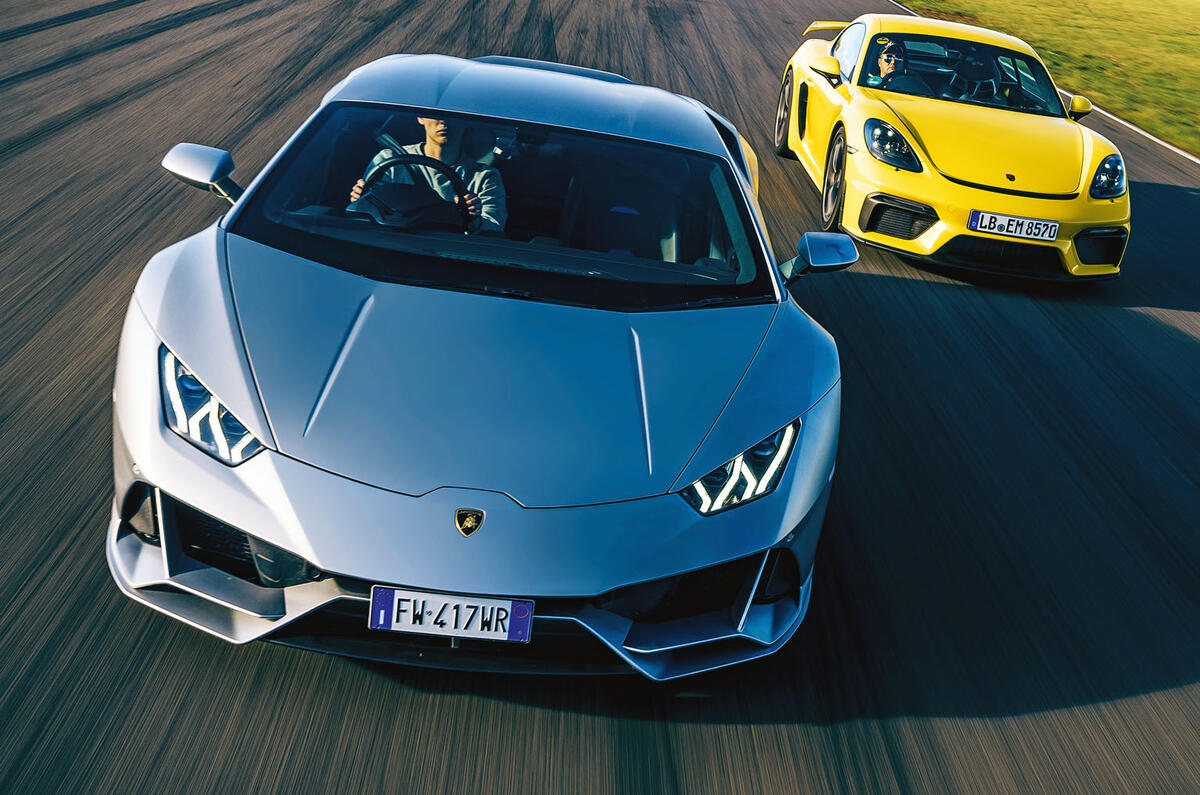
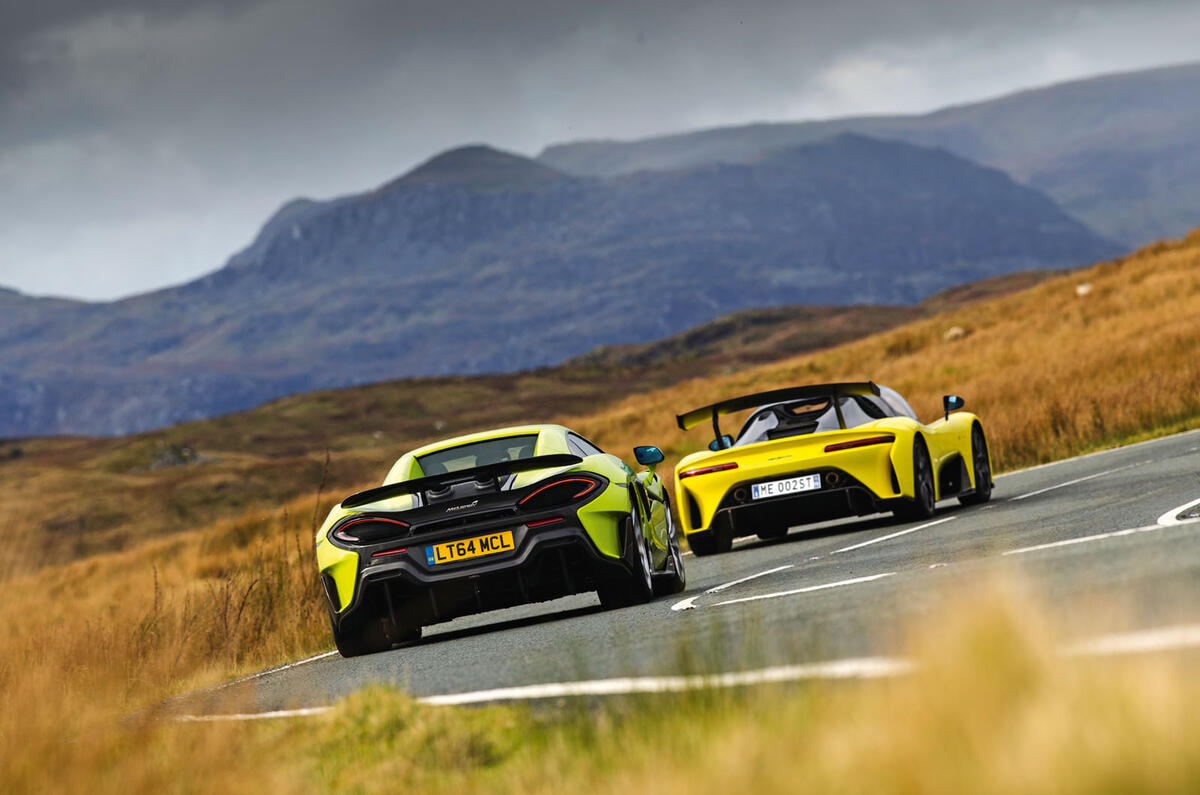
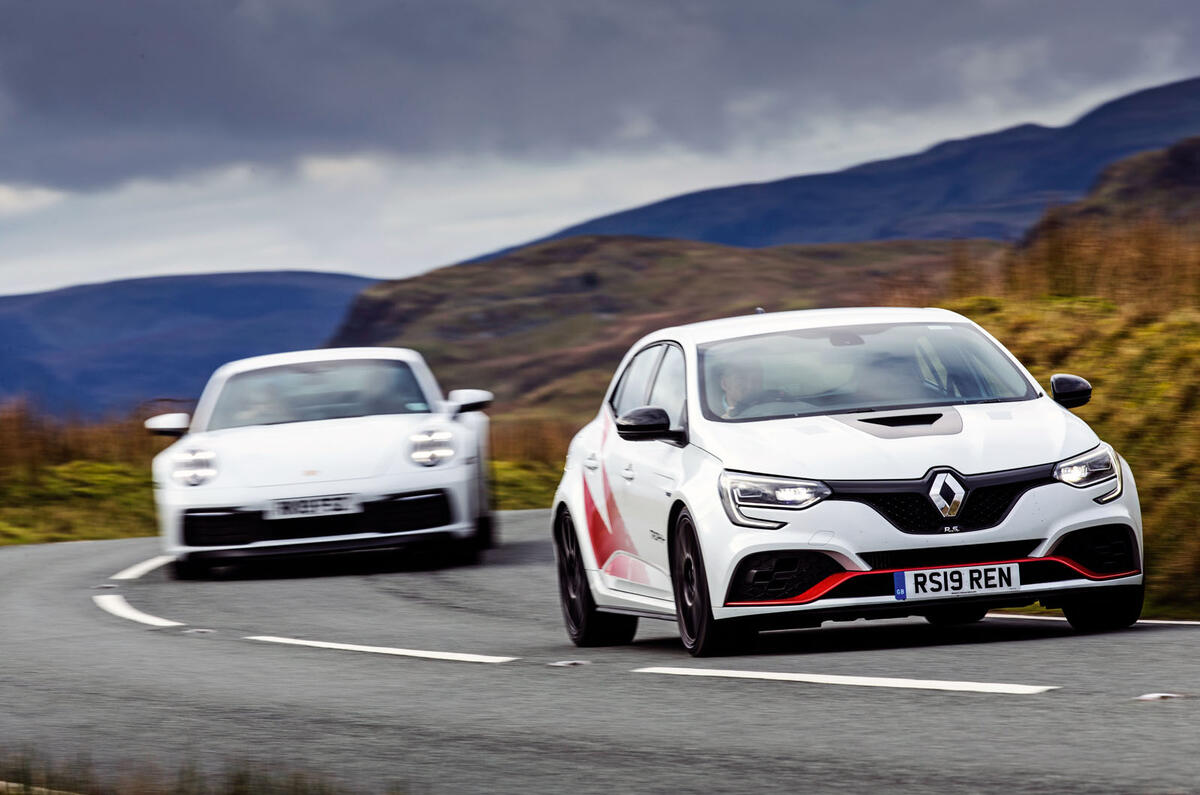
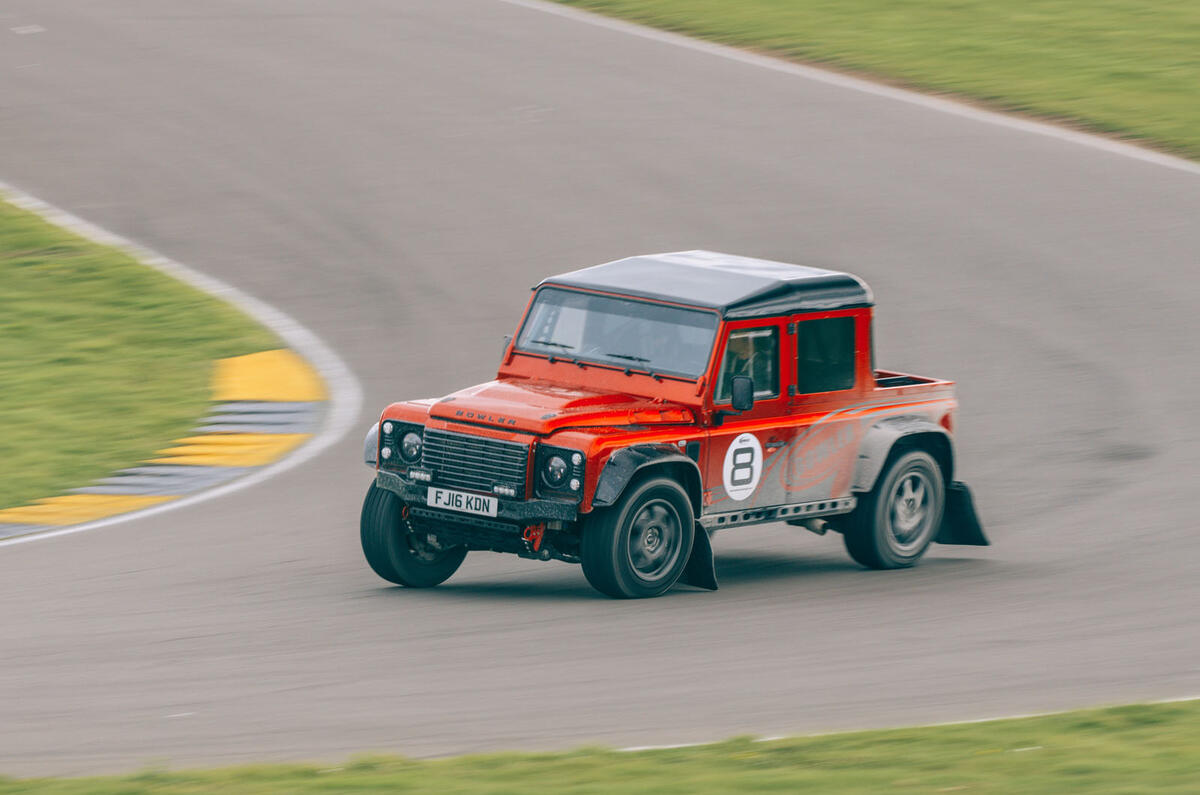
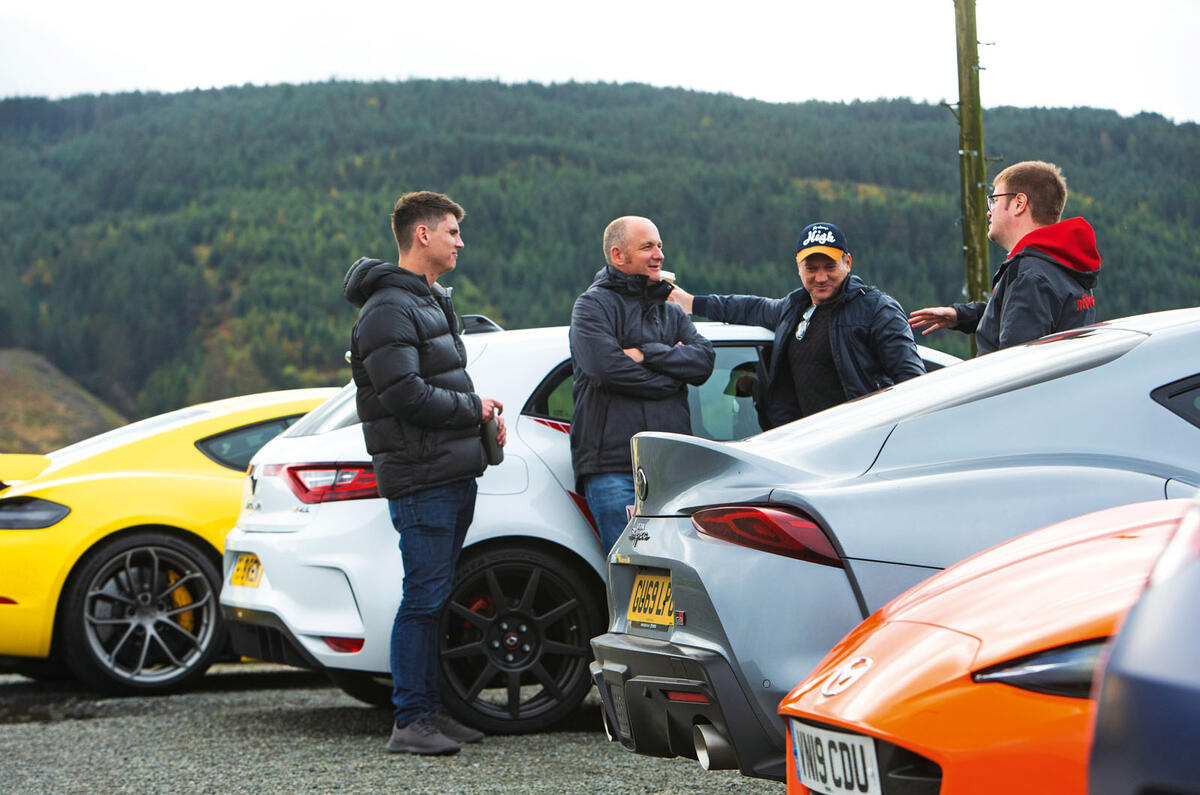
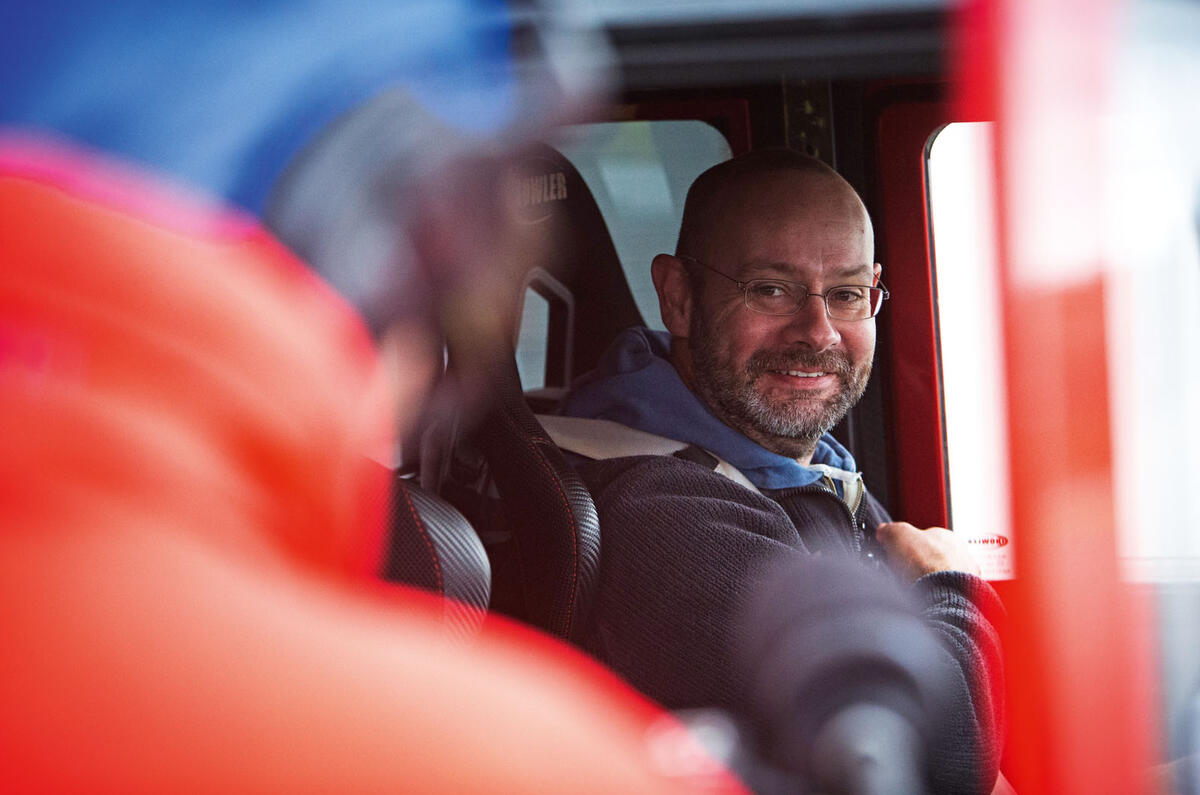
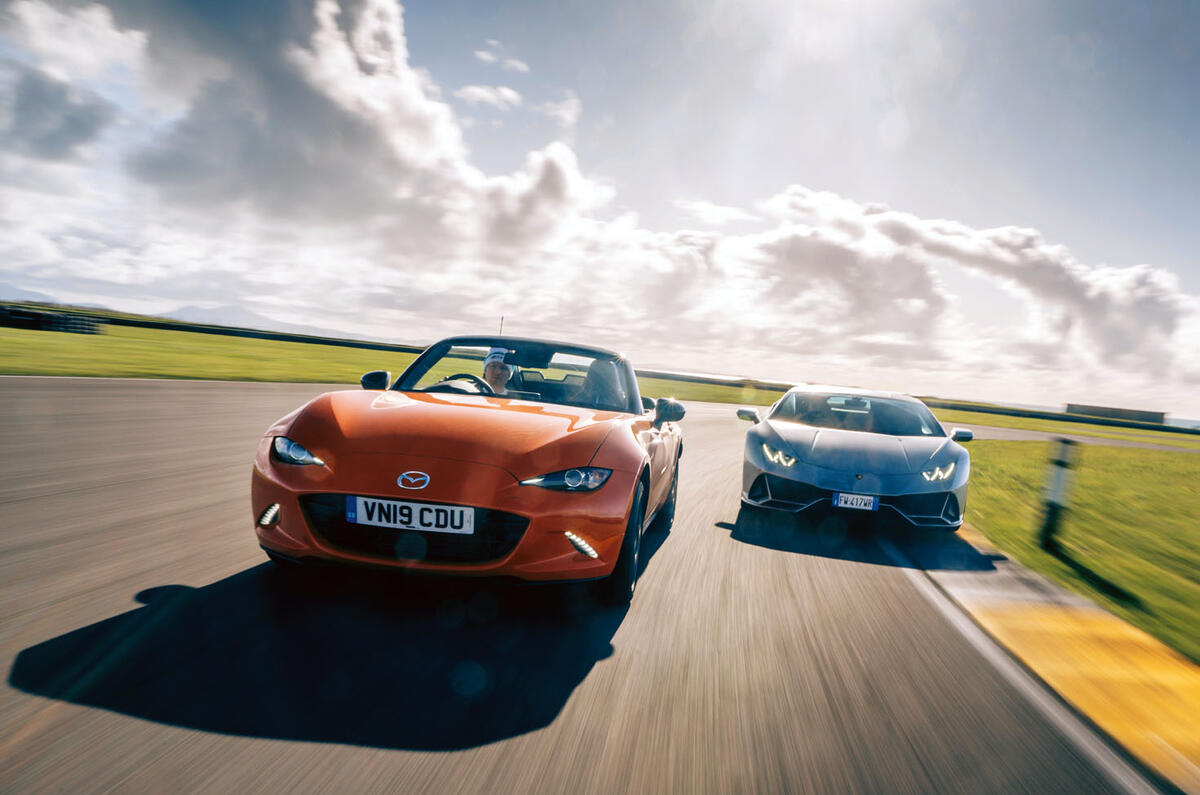
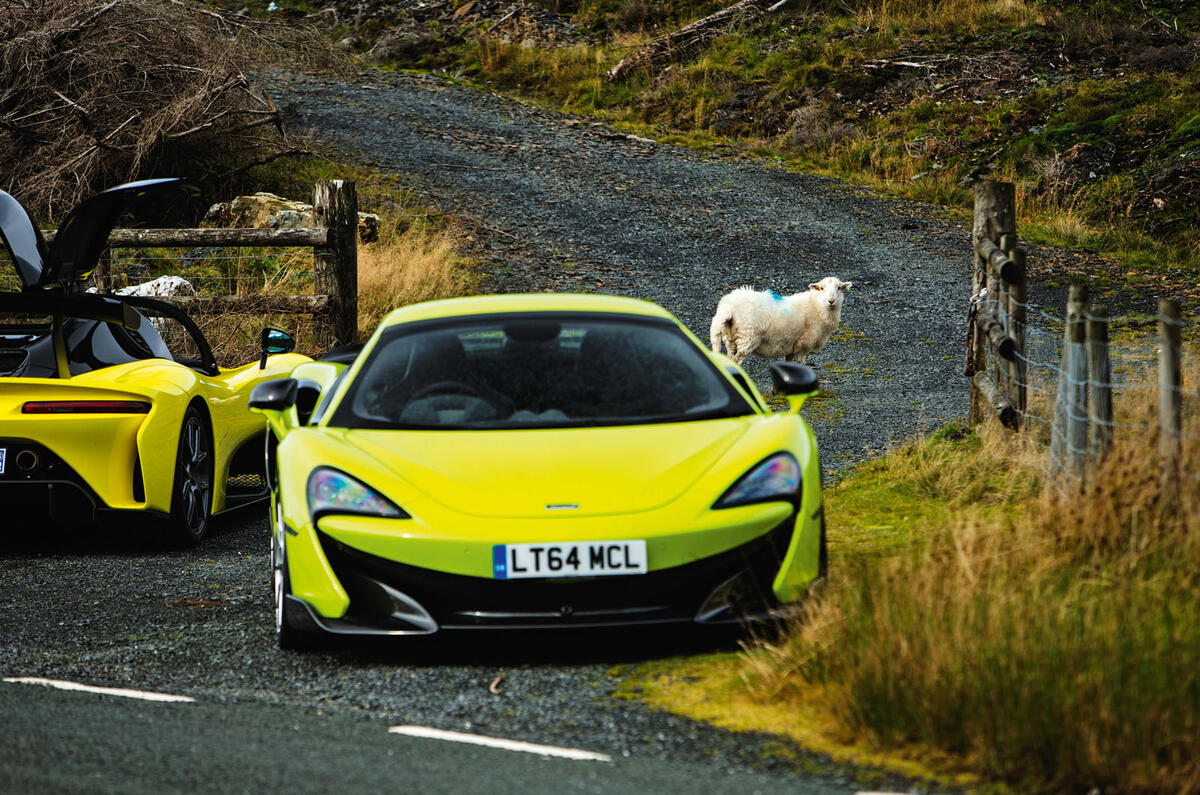

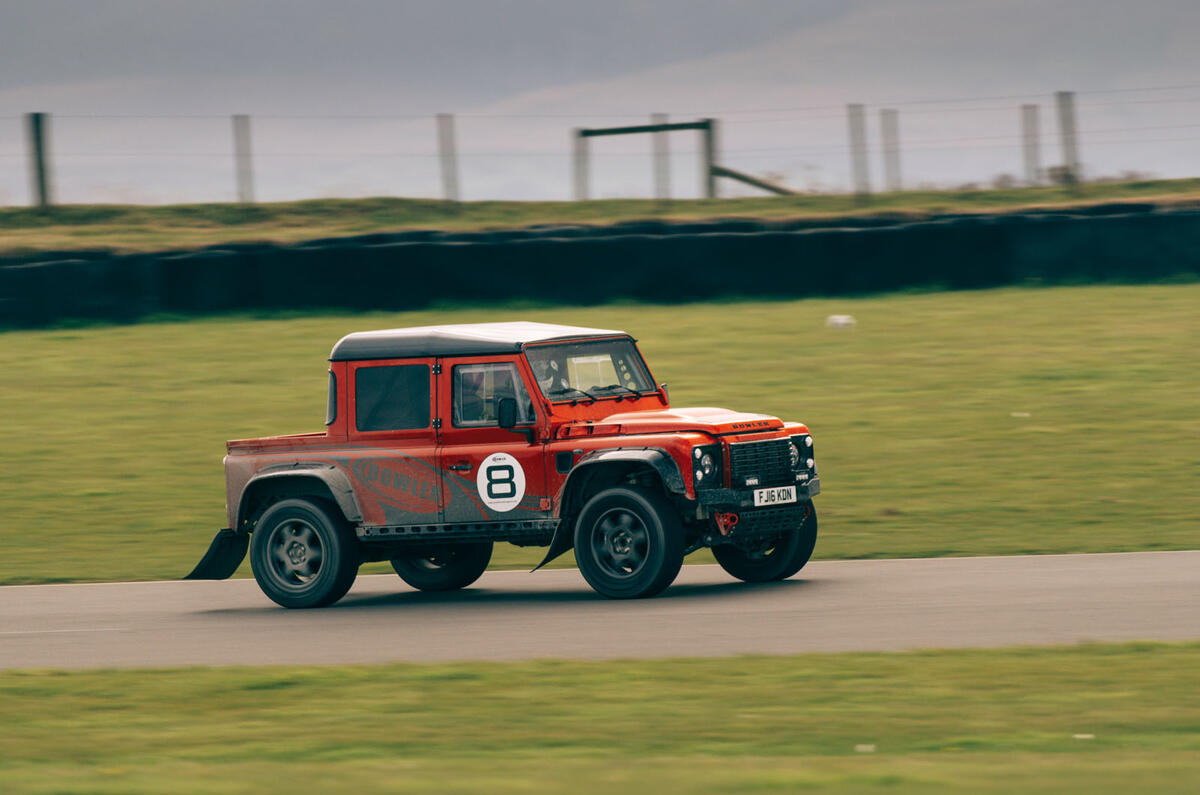

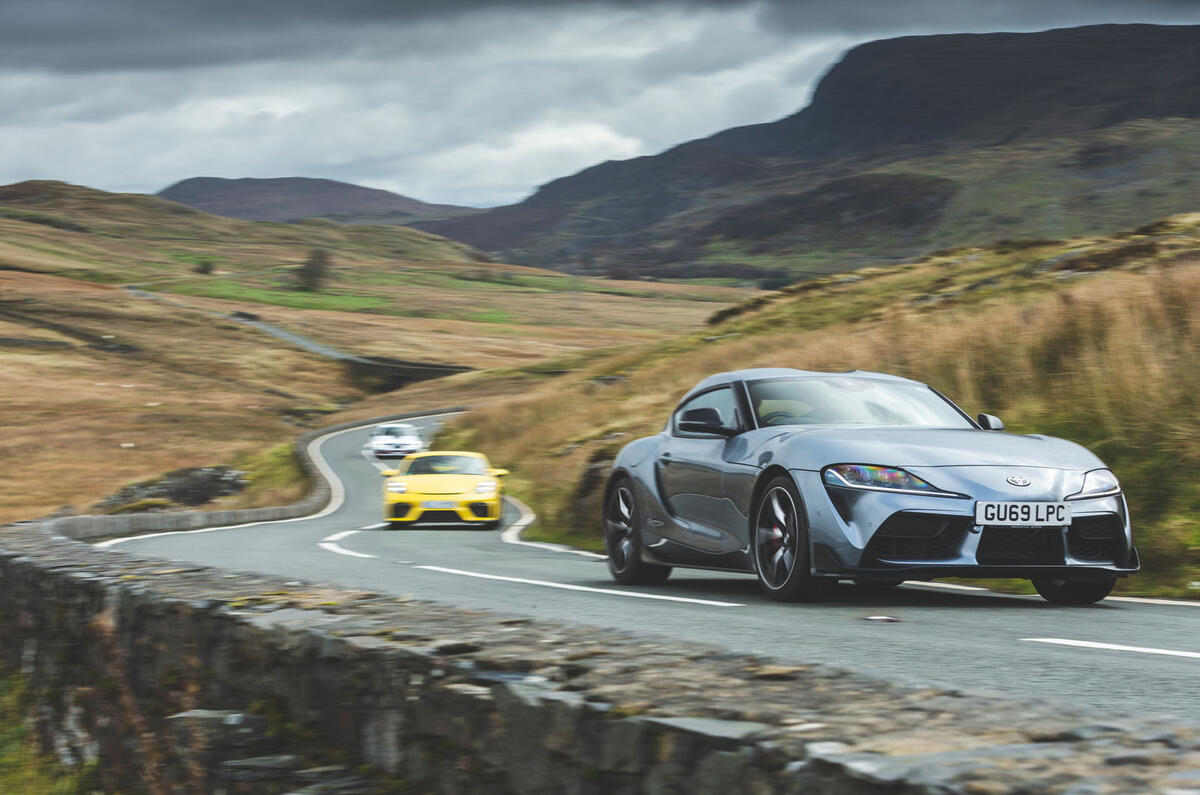
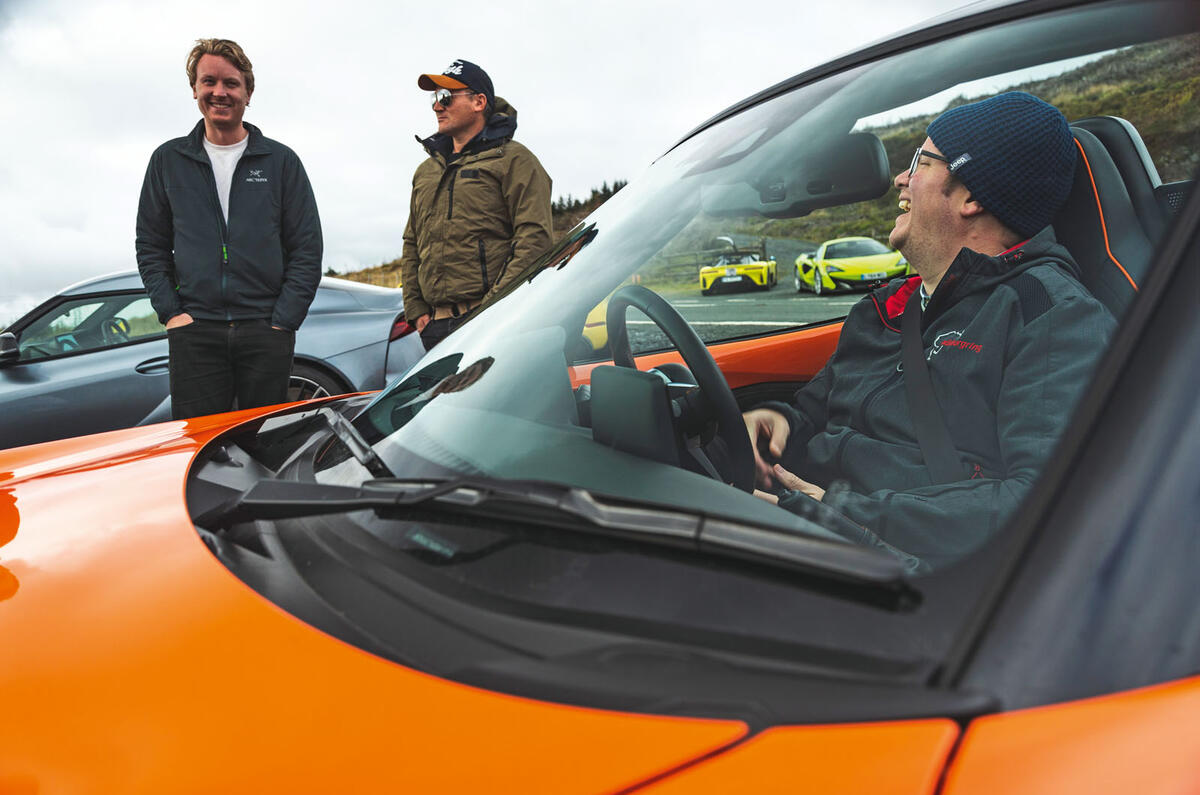


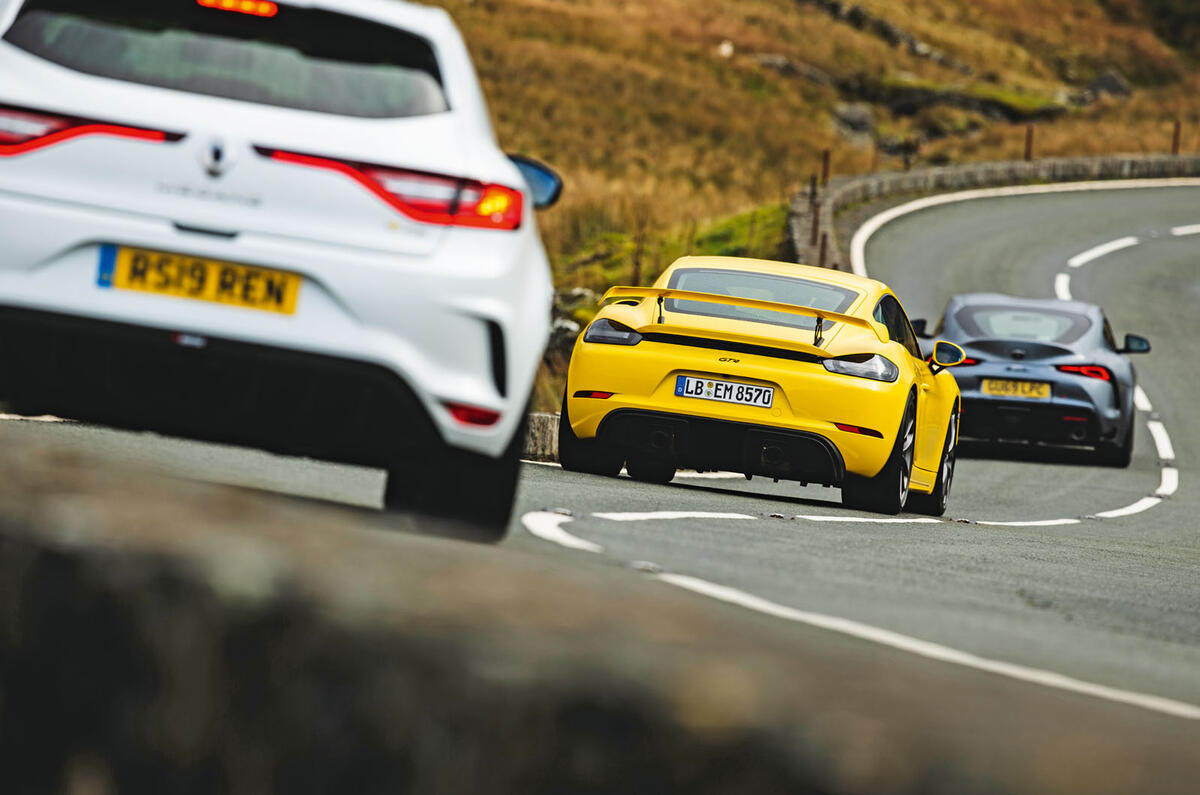
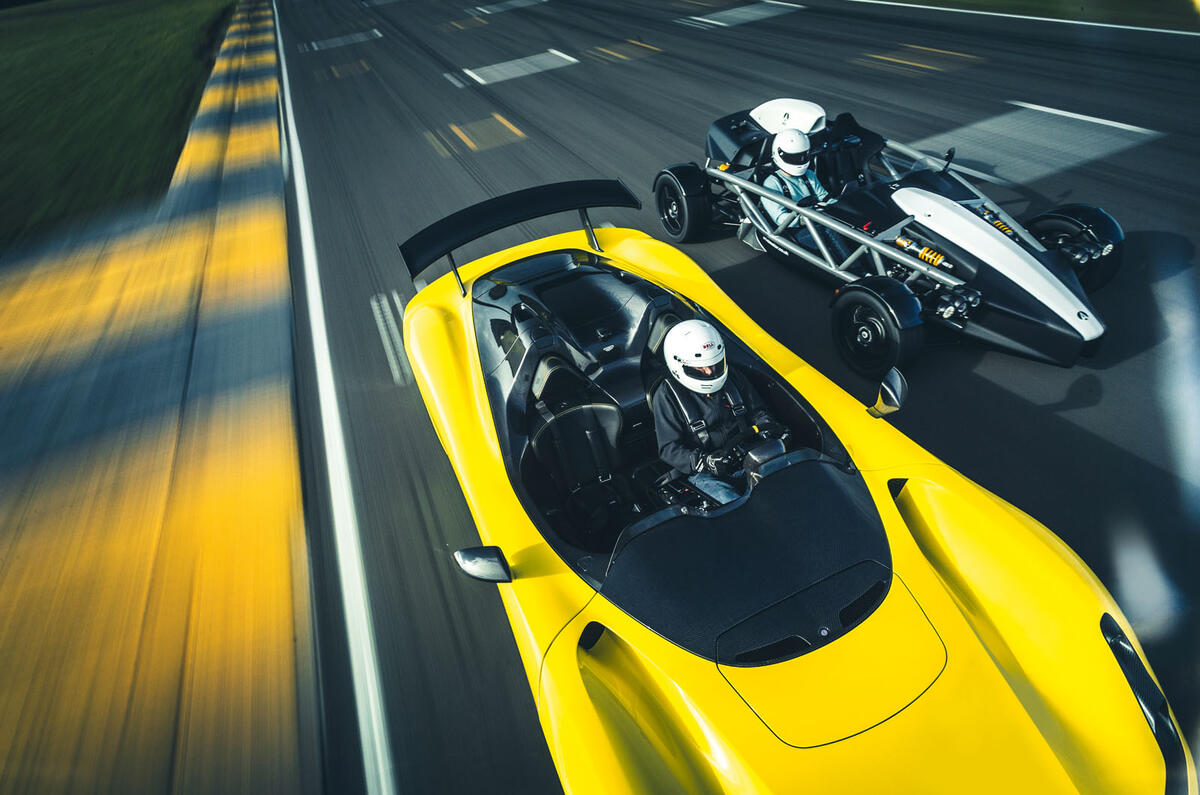
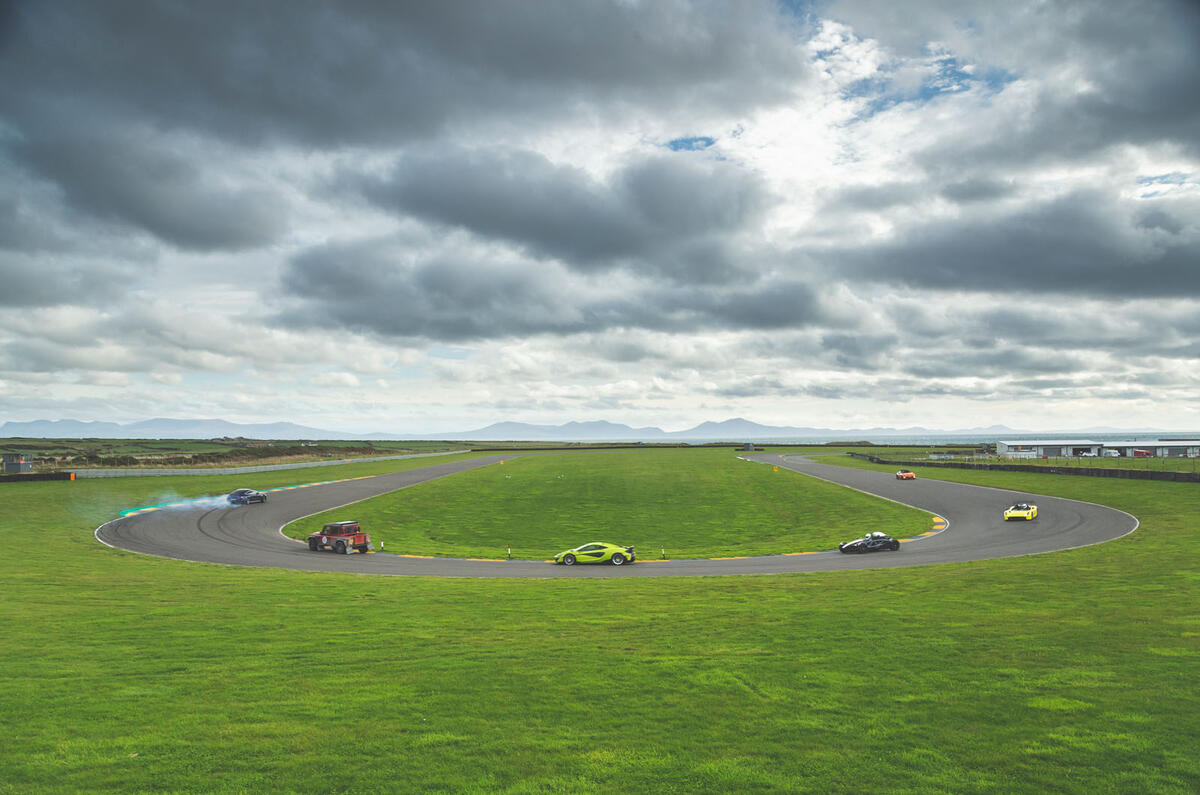
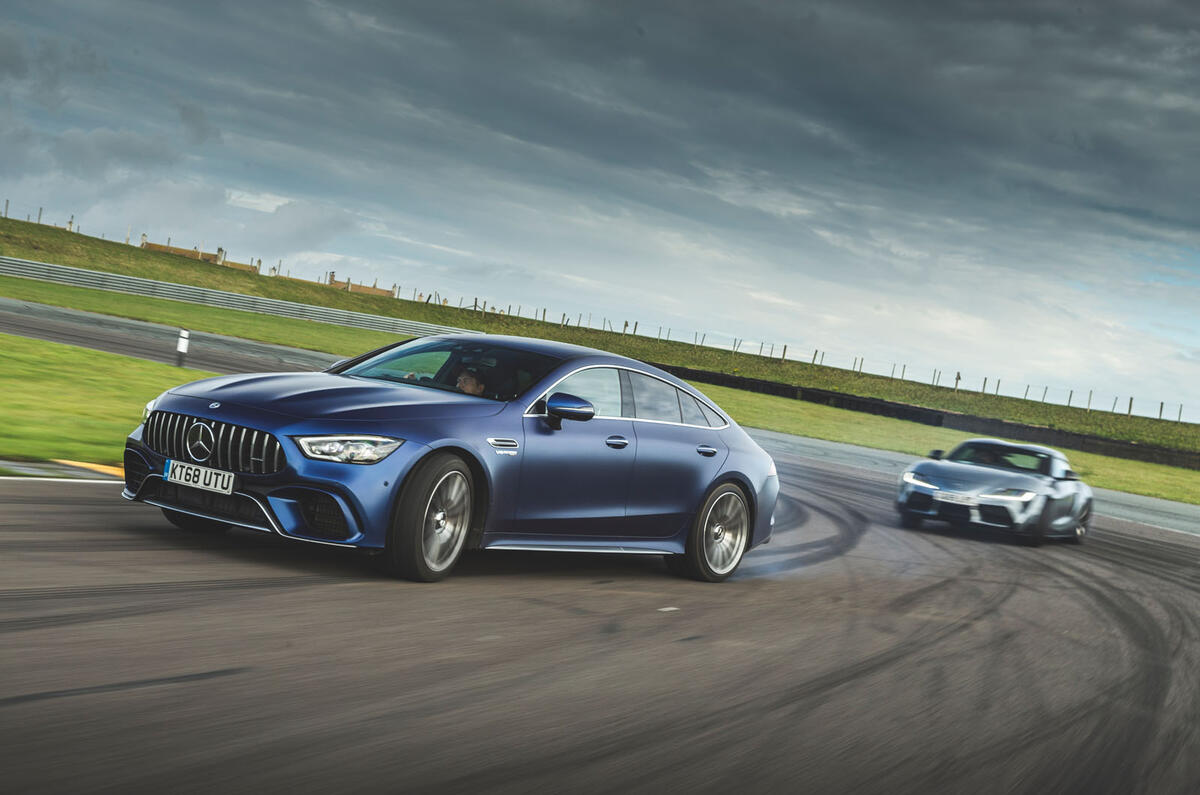


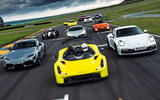
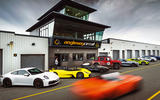
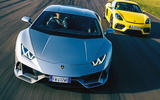


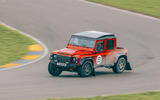


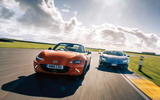

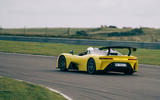

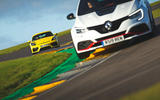
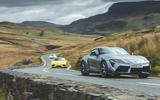
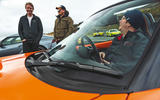

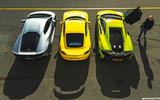
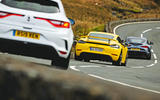

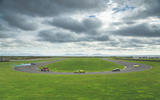
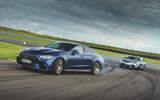








Join the debate
Add your comment
In other words...
The 911 is the best real world drivers car then.
Huracan please!
Much more enjoyable, maybe not such a good steer as some,but it's the car I'd have.